Panigale V2 (2020) review
Visordown puts the new 2020 Ducati Panigale V2 through its paces on track at Jerez; here’s what we make of the new motorbike.

The Ducati Panigale V2 (2020) was unveiled around three weeks ago in Rimini. The bike is an evolution of the 959 Panigale but its mimics the V4 in looks, along with a 6-axis IMU EVO electronics package and slightly more power.
You can read our 2025 Ducati Panigale V2 review here
According to Ducati, the ethos behind the V2 is that of ‘pure riding experience’, doing away with chasing ridiculous power figures and top speeds, instead, focusing on handling and rider satisfaction. We tested this theory on the MotoGP circuit of Jerez, Spain, and can confirm the ethos has been well and truly met.
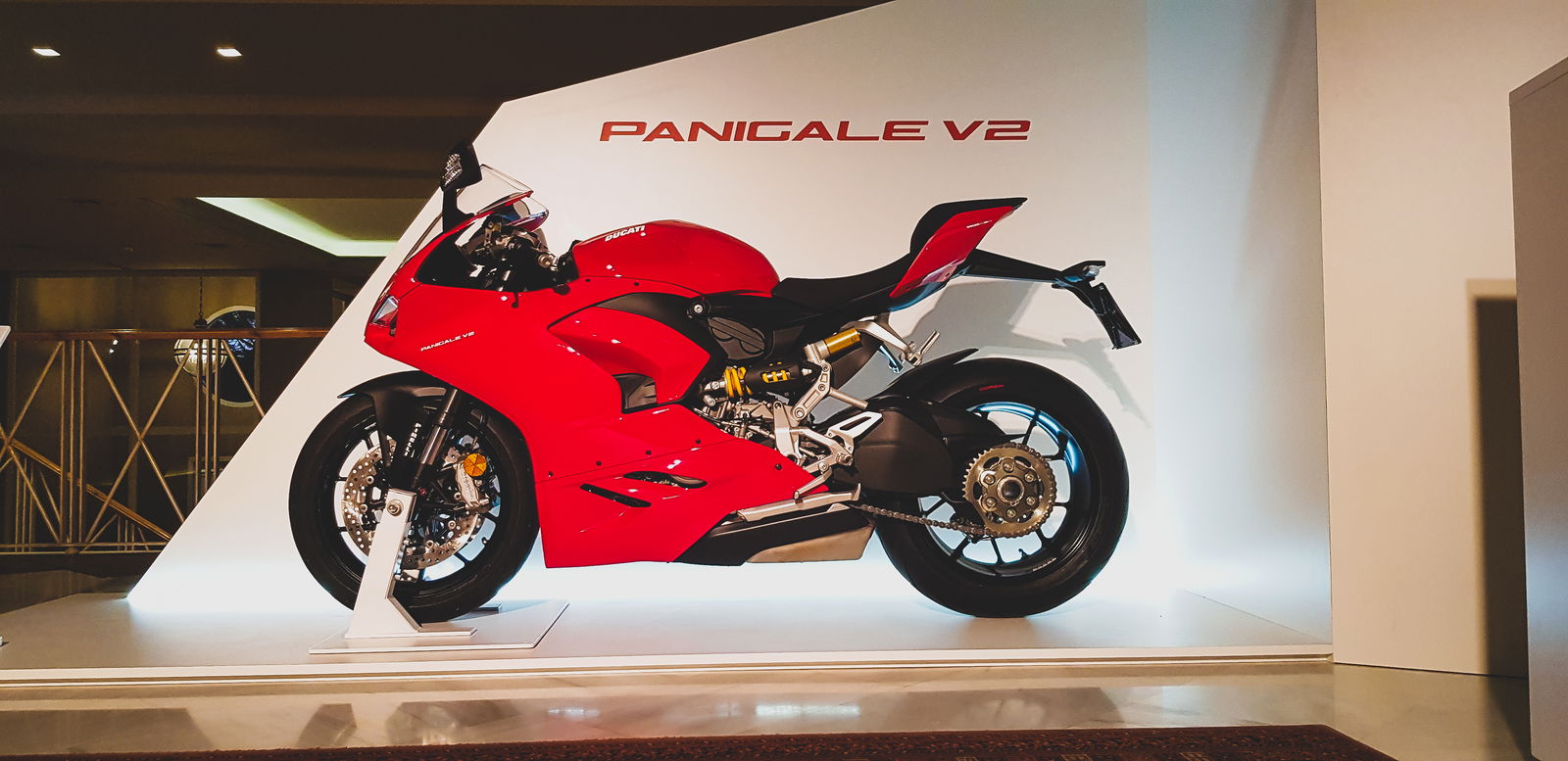
Ducati Panigale V2 (2020): Price and colours
At £14,495 you’re paying a premium and it’s only available in red. It’s a couple of a grand more than a stock 959, but you are getting a lot more goodies.
What’s new on the Panigale V2 compared to the 959? |
V4 Inspired fairings |
4.3” TFT dash |
EVO IMU electronics package |
More power and torque (new injectors) |
Low slung single exhaust |
A refined traction control system |
Quick shifter up/down |
Single-sided swingarm |
Suspension modifications |
And 5 spoke wheels |
Read 959 review here.
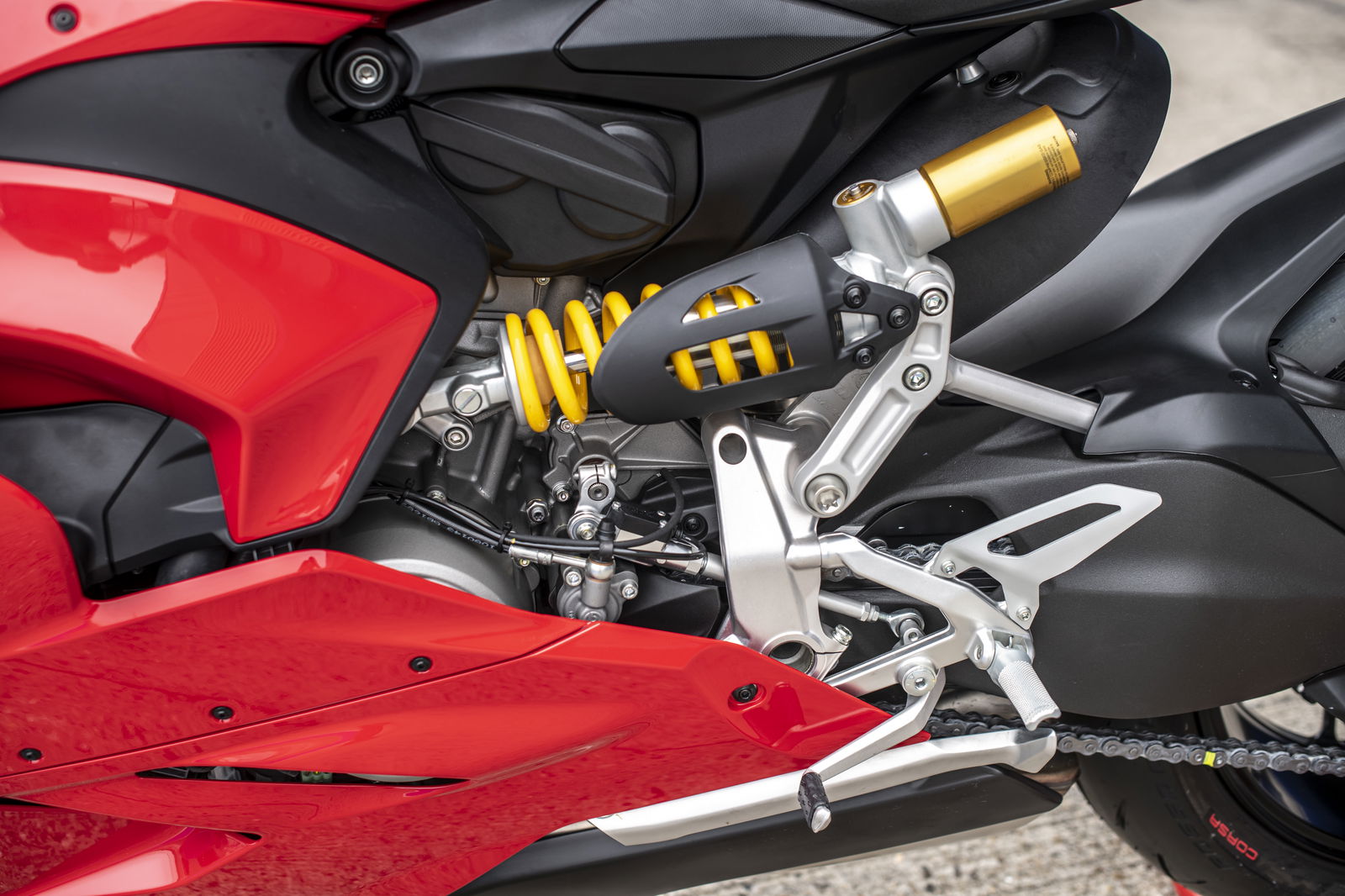
Ducati Panigale V2 (2020): Engine
The thumping Euro 5 compliant v-twin encased within the elegant V4 inspired bodywork is the same 955cc Superquadro found in the previous 959 Panigale. It’s been slightly tweaked and kicks out a claimed 155bhp and 104Nm [ 5bhp and 2Nm more than previous]. Ducati has achieved this with an improved front air duct and different injectors (two per cylinder) - helping to reduce pressure loss. Is there a noticeable power increase? Not really, and there’s a slight bog down under 2k, but the free-revving motor feels smoother than the last and is satisfying as heck to ring the nuts off.
Something that’s also pleasing, is the addition of an up/down quickshifter. On the track, it didn’t skip a beat, even with my rather pony shifting. The kill time is spot on, and hearing the bike fly past full chat as someone catches the next gear is something else - even with the stock can.
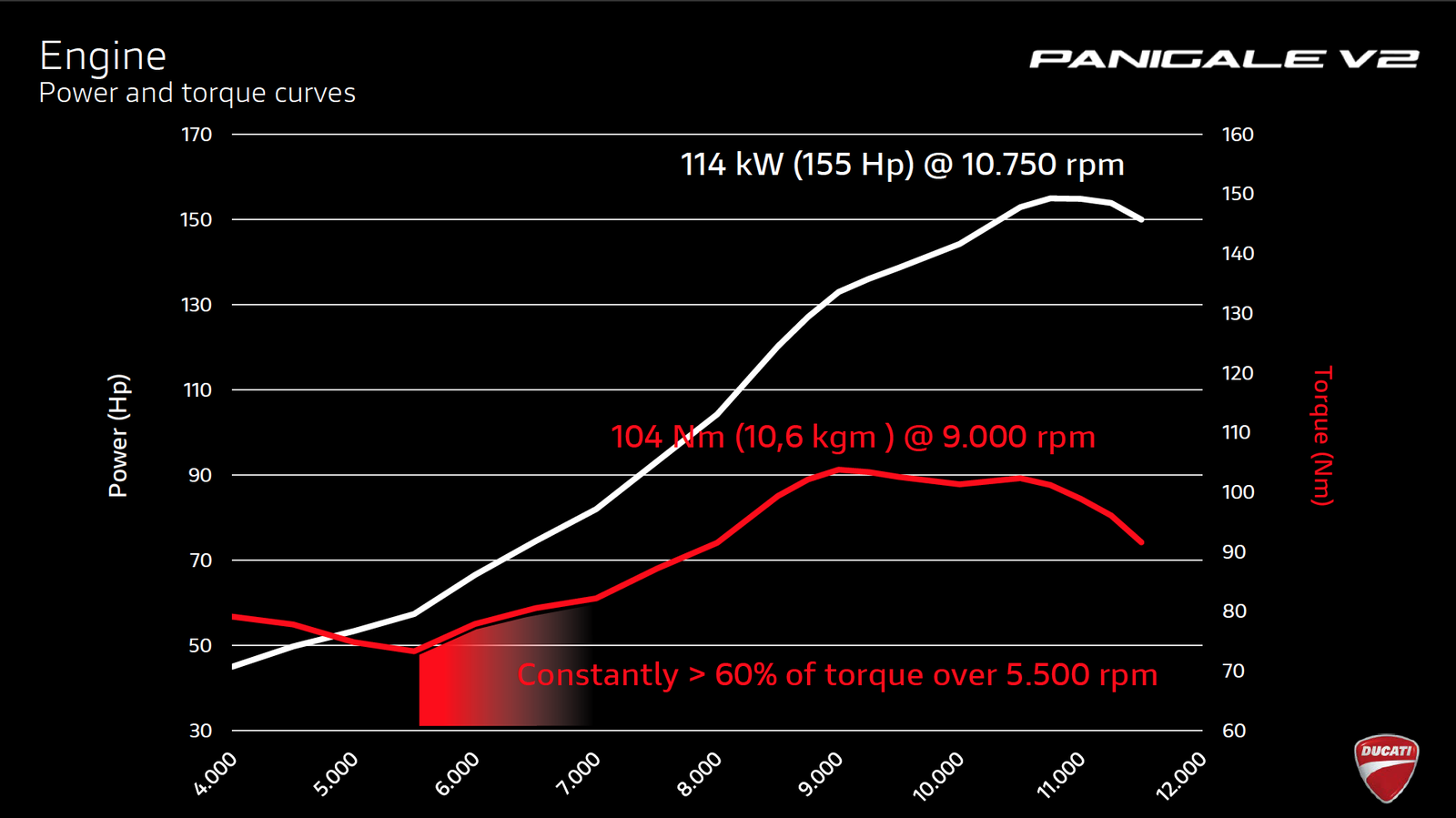
Yes, you heard me correctly, the stock can is a beast. Ducati has done away with the twin side-mounted setup and opted for a much sleeker low-slung single exhaust profile. It’s loud but not obnoxious.
Ducati Panigale V2 (2020): Chassis and Suspension
Under the skin, the V2 is a 959, sharing the same engine [which a stressed member of the frame], front airbox and steel trellis subframe. However, the suspension and geometry has had some refinements made to it. At the front, the fully adjustable 43 mm Showa Big Piston Fork (BPF) has 2mm more travel. And at the rear, the Showa side-mounted monoshock has been revamped internally and again has 2mm more travel. The changes have led to a 52% front and 48% rear weight distribution with the bike pitch forward slightly.
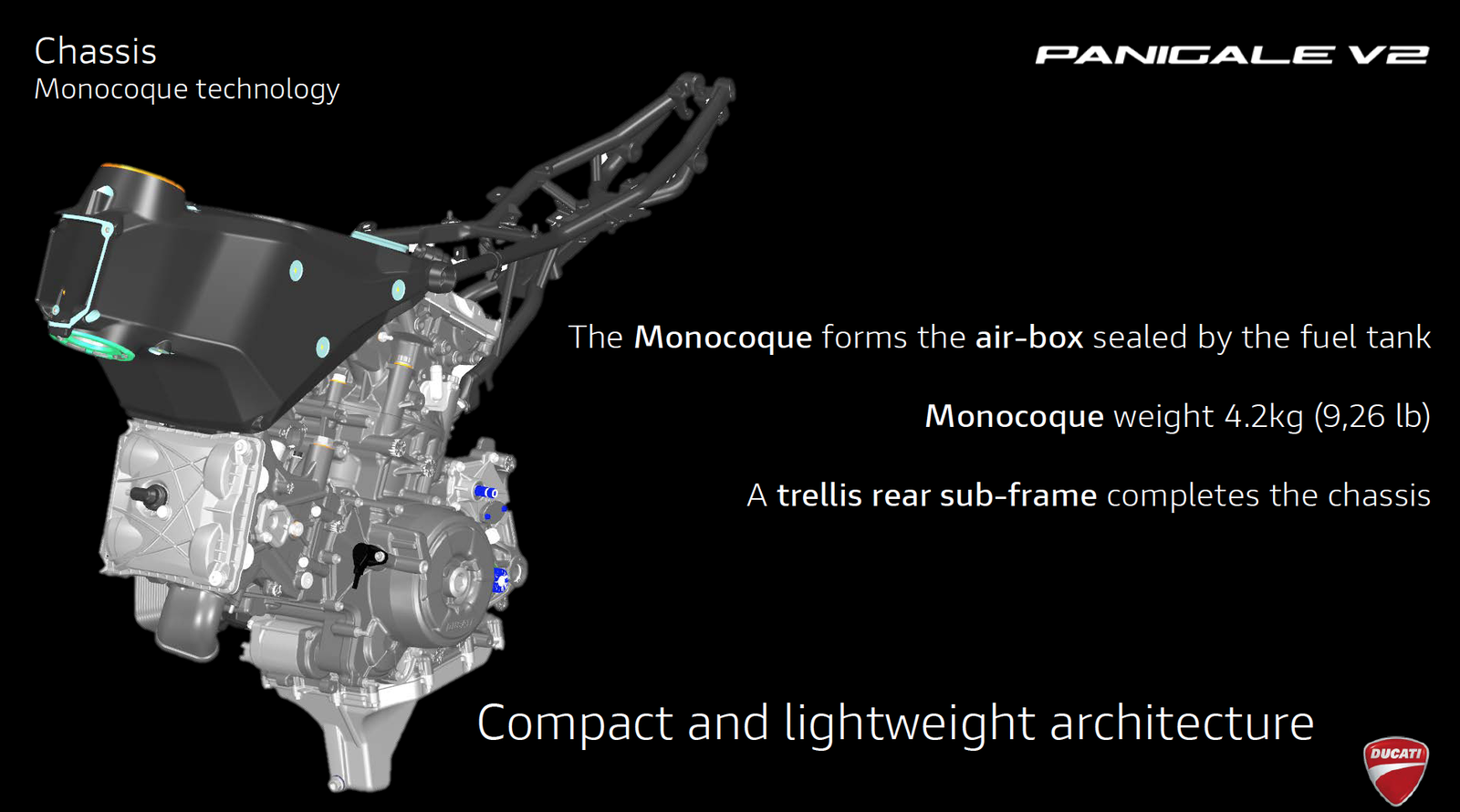
These small changes have transformed the handling characteristics of the V2 when compared with the previous 959. The suspension - although a little under sprung for the track - generates plenty of feedback in combination with the Diablo Ross Corsa II rubber. The slight front bias makes the front end feel planted and stable at lean, without sacrificing the nimbleness of the package. Granted, I was on a track in perfect conditions [untill it pissed it down...] but on a twisty B road, the forgiving nature of the V2 chassis and manageable power level would be epic.
Ducati Panigale V2 (2020): Handling
Well, it’s a Ducati, so it handles well. In fact, it handles beautifully. It’s involving, satisfying and for the most part untaxing to ride, even for a 6ft4 lump like me. The power deficiency to its bigger brother, the V4, allows you to focus on carrying your corner entry speed, and the progressive V-twin powertrain pings you out of the other side in a rather lovely way.

Out of some bends, there’s a slight head wobble, but the V2 doesn’t tie itself in knots or allow itself to get too out of shape. This is thanks to the addition of a 6-axis IMU and an improved traction control system. In sport mode, the rear slide control function is enabled - which is a sh*t load of fun! And, If you’re a proper boss you can disengage the rear ABS in race mode, and go as sideways as you like.
What’s not so fun is the skinny nature of the tank and front fairings. Under heavy braking I found myself sliding over the tank and having to put weight on my wrists, which isn’t ideal. The addition of tank grips would resolve this issue for the most part.
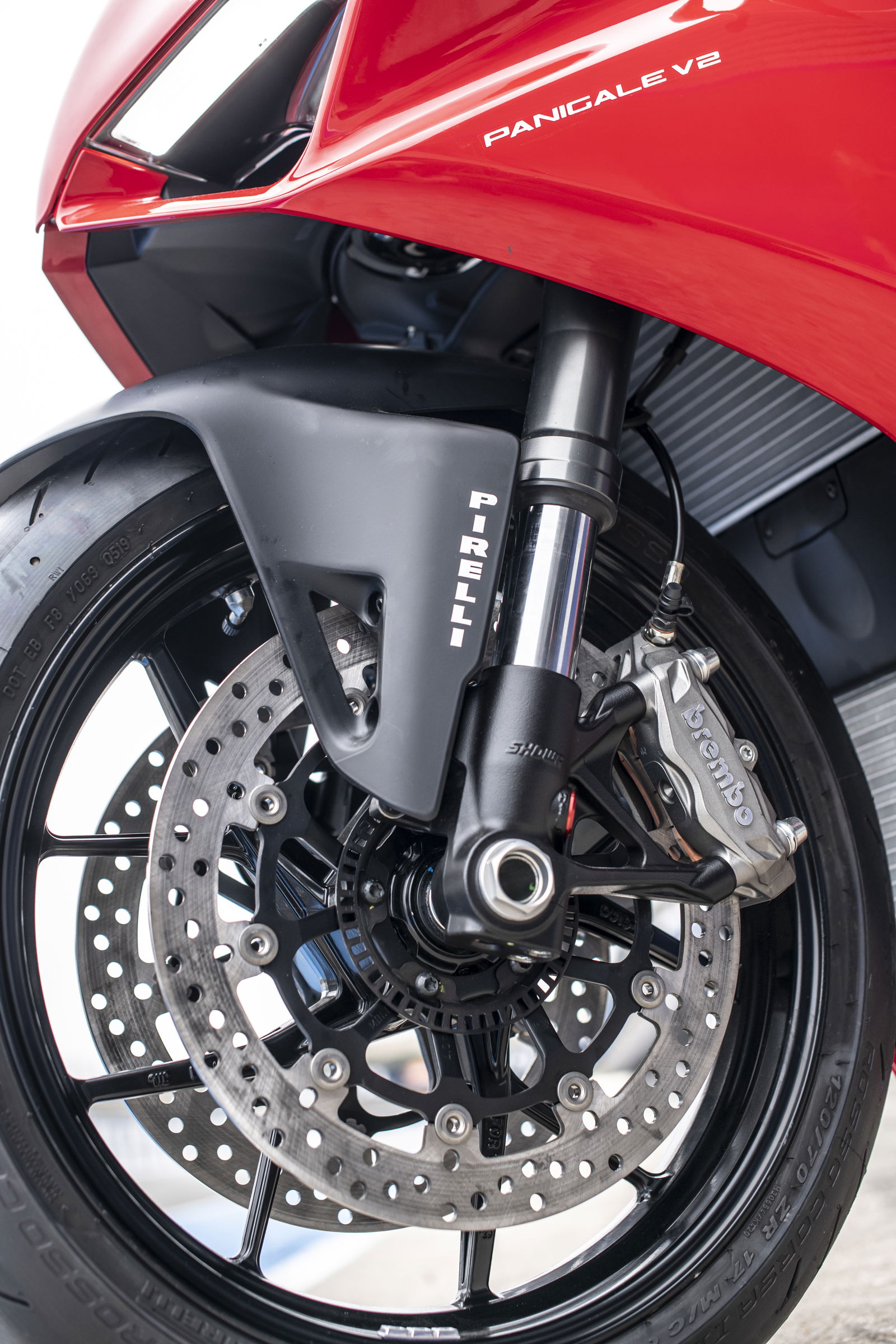
Ducati Panigale V2 (2020): Brakes
At the front, twin Brembo M4.32 monobloc calipers matched with a Brembo master chomp down on 320mm discs; And at the rear, there’s a single-piston Brembo and 250mm disc. As you’d expect the brakes are impressive, plus, in combination with the V-twin engine braking, and V4 EVO ABS and cornering ABS, the 200kg (wet) V2 comes to a stop hella quick.
The ABS is fairly non-intrusive, especially if you nowhere near the limit like me…
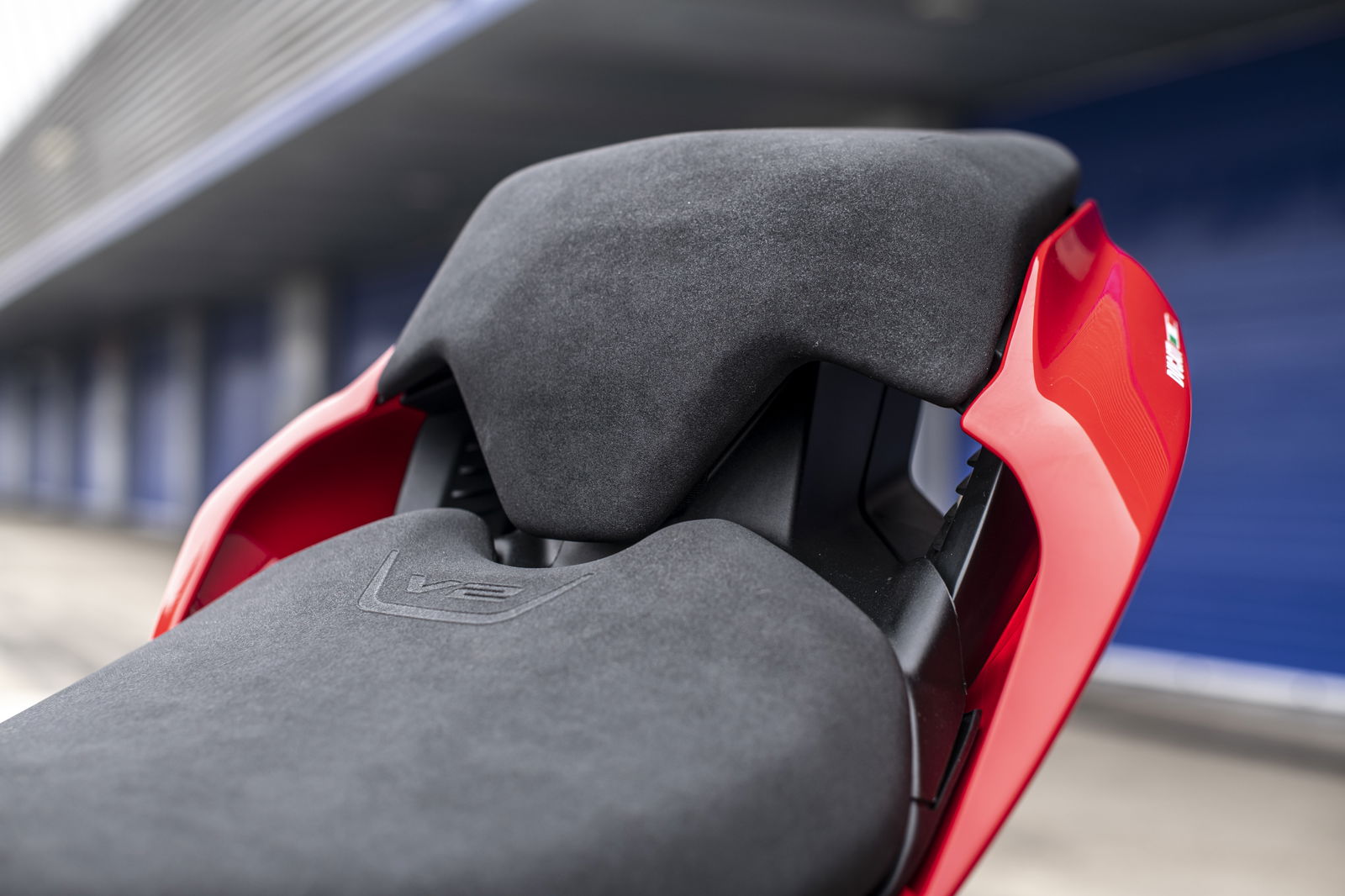
Ducati Panigale V2 (2020): Ergonomics/Comfort
There’s a new comfort seat on the V2, which is plusher than the last. It’s 20mm longer and few mm taller which allows for an easier tuck position when you’re in full send mode. At 840mm it’s a good practical height for most riders.
Besides the aforementioned awkwardness under braking, the V2 is a much more pleasant bike to ride and sit on; the small changes make a big difference. You get an immediate sense of place once aboard and can adjust the brake and clutch levers if required.
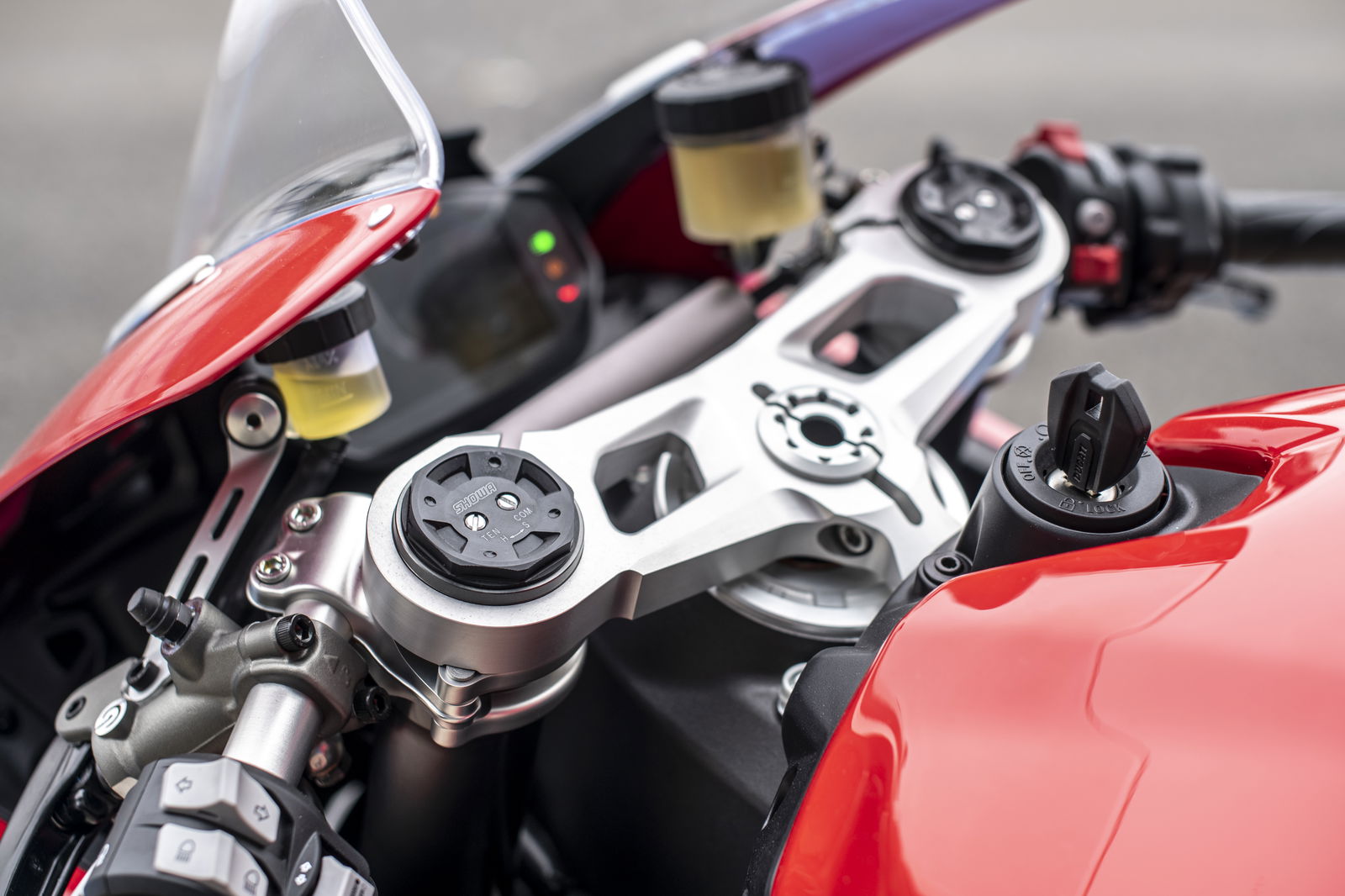
Ducati Panigale V2 (2020): Equipment
The V2 comes with all the electronics a tech-savvy motorcyclist could ever desire, such as:
Riding Modes (Race, Sport, Street)
4.3" colour TFT dashboard
6-axis inertial platform, ABS Cornering EVO (new), Ducati Traction Control (DTC) EVO 2, Ducati Wheelie Control (DWC) EVO, Ducati Quick Shift up/down (DQS) EVO 2 (new), Engine Brake Control (EBC) EVO
Quick shifter up/down
Sachs steering damper

The EVO 2 electronics package seems improved, but I can’t get my head around whether this is a good or a bad thing. It sounds crazy, but it’s so unintrusive is sports mode that it’s hard to tell if your riding with feel or relying on the electronics. On the flip side, when the heavens opened at Jerez, having such a system was much to my delight - with no tail-happy squeaky bum moments to report. For the average rider, such a package would increase confidence and likely speed - around a track at least.
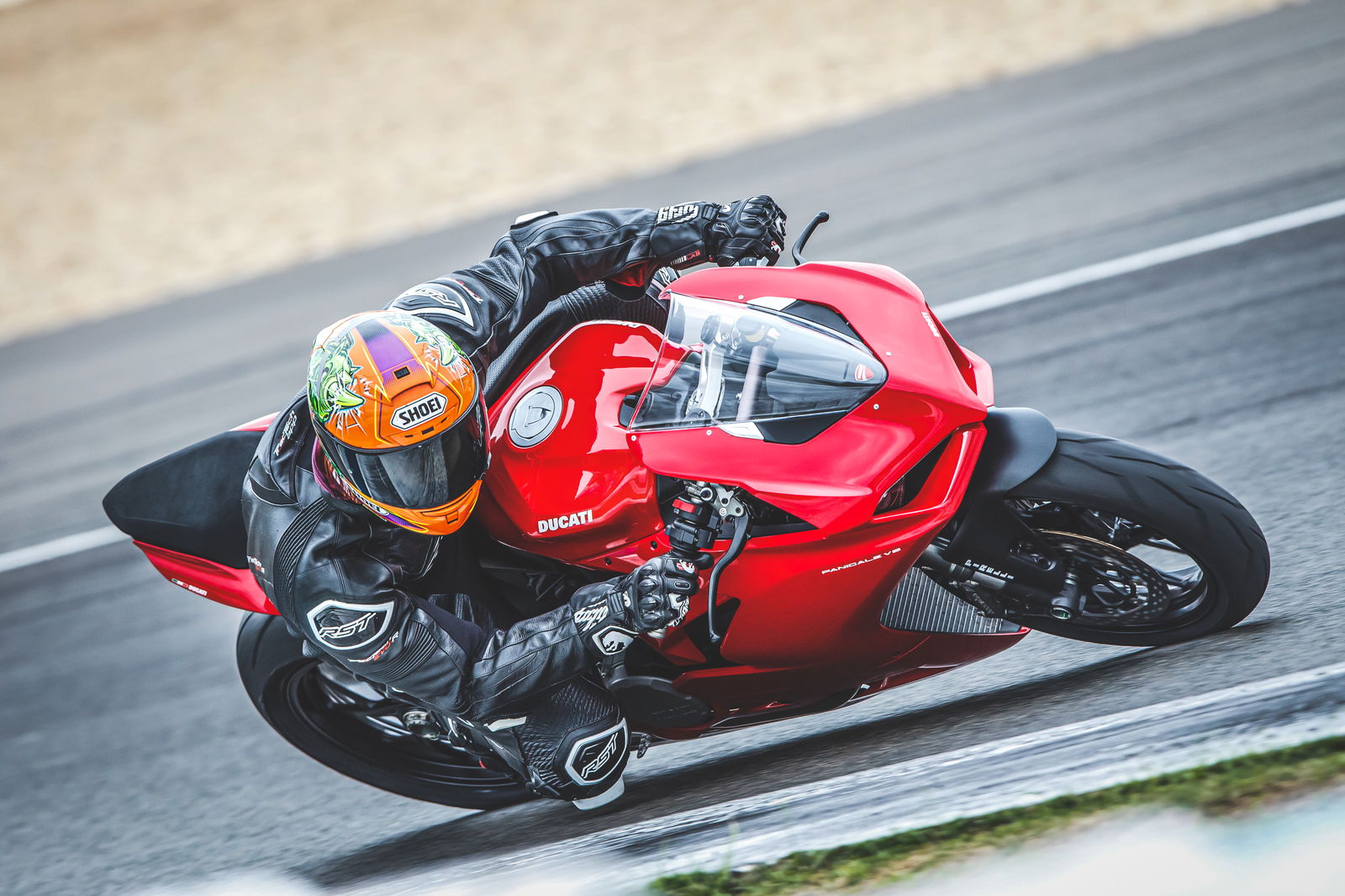
Should I buy the Ducati Panigale V2 (2020)?
Is the Ducati Panigale V2 better than a 959? Yes, and by quite a margin actually. It was a good bike to start with but had a few areas where it lagged. Is it worth two grand more? Well, that depends on whoever is buying it. In my mind, the sort of person this bike might interest is someone who’s had their time on 180bhp+ superbikes and is looking for something just as capable in the bends but not as mind-blowingly fast and let’s be honest, scary.
The oh so Ducati v-twin motor, superb handling, refined EVO electronics package and V4 looks, more than makes up for the power deficiency. What’s more, is on-road or track you’d be hard-pressed to go much quicker on a superbike. If you’re not about chasing power stats and enjoy riding no matter the claimed bhp, the Ducati V2 would certainly appeal. I’ve got to hand it to the guys and gals at Ducati, they’ve certainly hit the mark with the V2.

-42b362.jpg?width=1600)